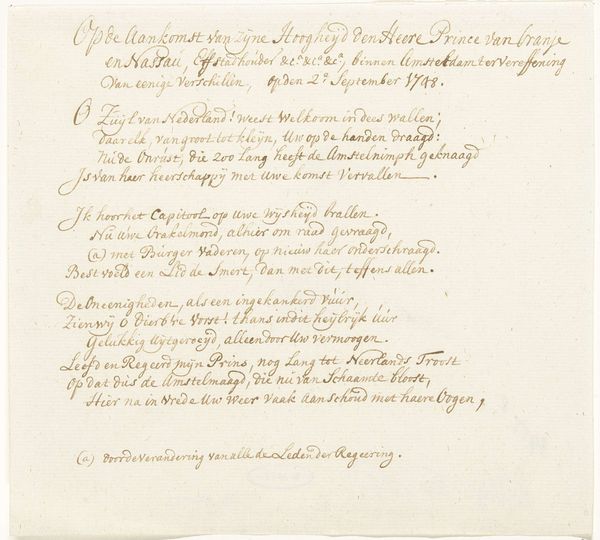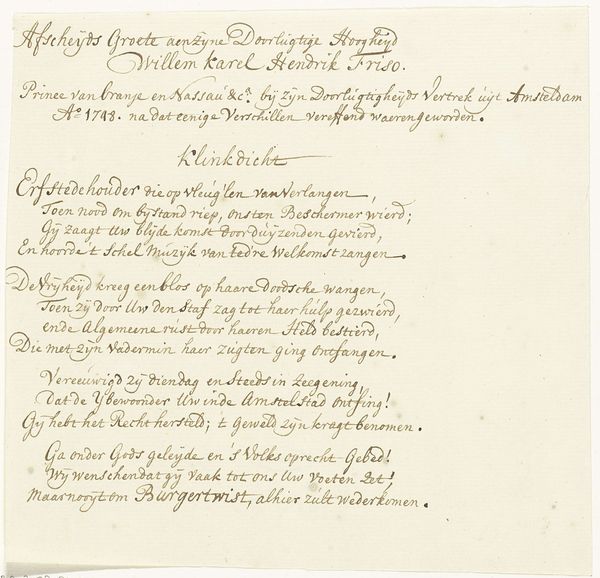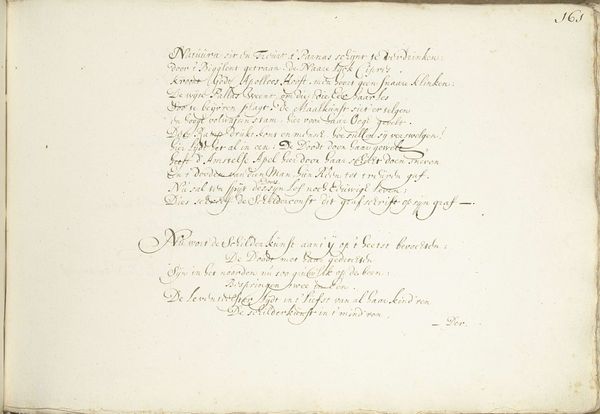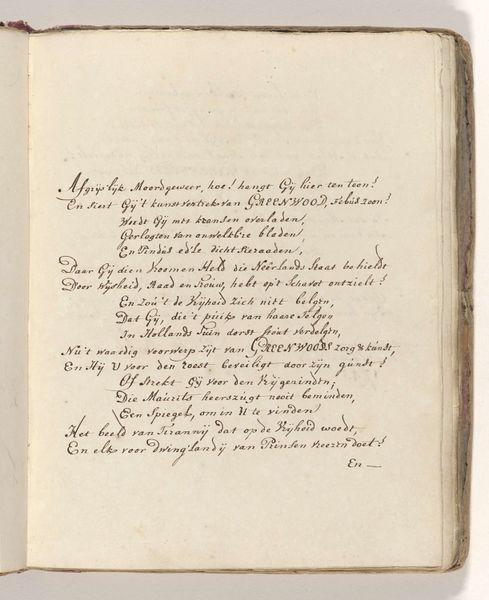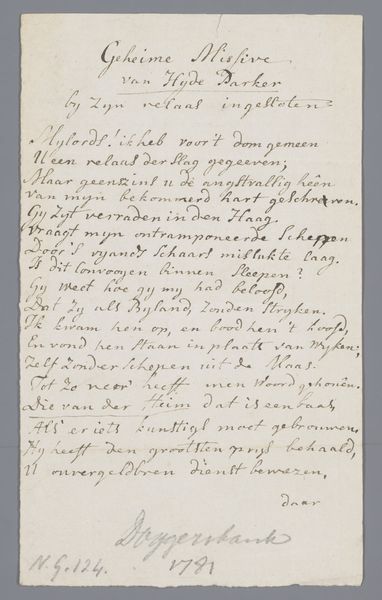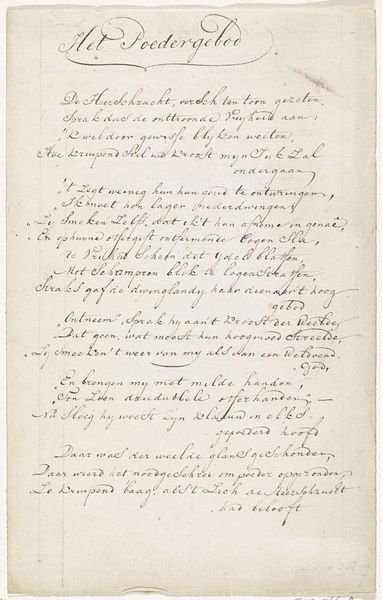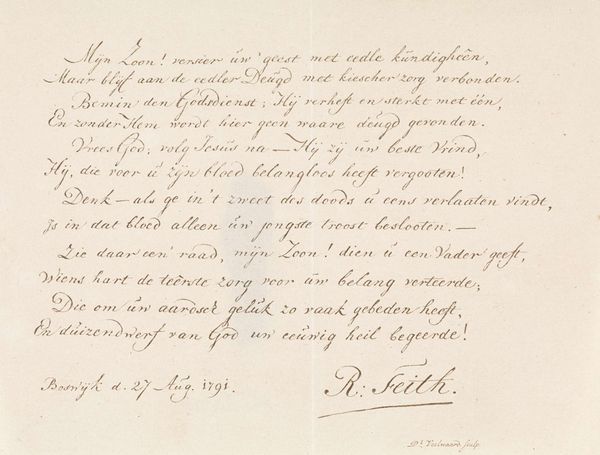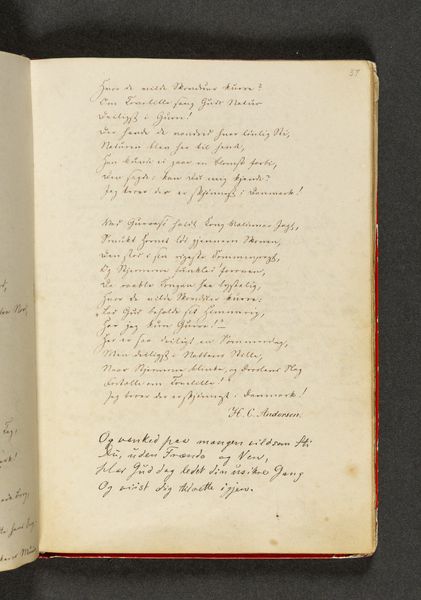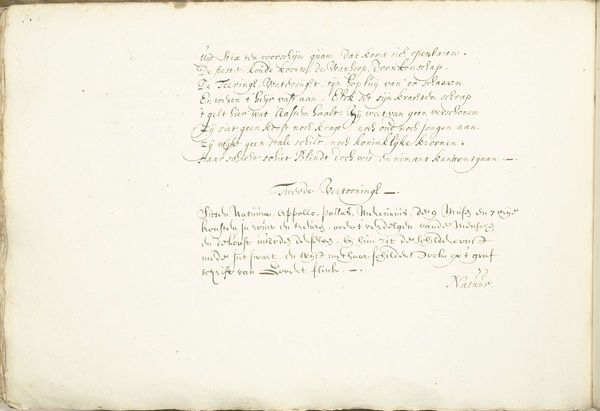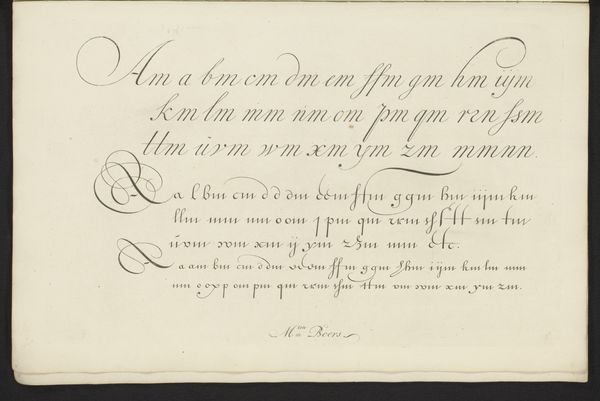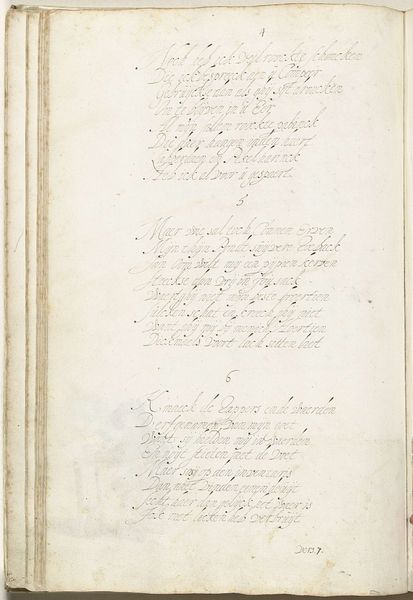
drawing, textile, paper, ink
#
portrait
#
drawing
#
hand written
#
self-portrait
#
hand-lettering
#
hand drawn type
#
hand lettering
#
textile
#
paper
#
ink
#
hand-written
#
hand-drawn typeface
#
fading type
#
romanticism
#
thick font
#
line
#
handwritten font
#
calligraphy
#
small lettering
Dimensions: height 111 mm, width 169 mm
Copyright: Rijks Museum: Open Domain
Editor: So, this piece is entitled “Brief van Rhijnvis Feith A” by Daniël (I) Veelwaard, created sometime between 1819 and 1851. It’s an ink drawing on paper, with what looks like a handwritten letter. It has a somber and reflective quality, doesn't it? The handwriting feels so personal. What do you see in this piece? Curator: I see a confluence of personal longing and the weight of tradition, played out through the act of writing itself. The carefully wrought script, the chosen words, all point to an attempt to inscribe oneself into a lasting memory. The opening question – “Must my name have a place in your circle of friends?” – speaks of a deep-seated desire for belonging, a quest for recognition beyond the fleeting moment. What kind of symbols resonate with you from this script? Editor: The symbol of the oak tree. It implies strength and longevity, doesn't it? Curator: Precisely. But observe that the oak here is stripped bare "dor van bladen" – devoid of leaves. What could that represent? Is there a duality at play between what we want and what is achievable? Perhaps it symbolises the fading of earthly grandeur in the face of mortality? Editor: The poem continues by stating that only virtue and faith offer solace, suggesting a possible reading of an exploration of transient human desires. It encourages reflecting on our understanding of wisdom, wouldn’t you say? Curator: I would. The visual form is a cultural memory and the Romantic ideals further emphasize this longing. It evokes reflection about the eternal through handwriting and a consideration of the meaning and act of remembrance. Do you find its appeal lies more in its intimate, personal nature, or its commentary on cultural values? Editor: I initially saw it as a personal expression, but your perspective has highlighted the wider cultural themes, enhancing my understanding of the work. Curator: And yours brought back that intimacy and emotional quality, essential to remember.
Comments
No comments
Be the first to comment and join the conversation on the ultimate creative platform.
